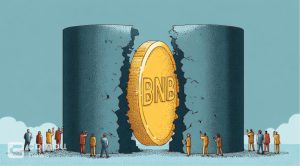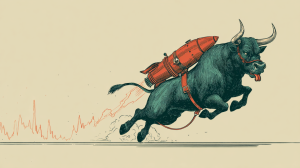People are learning everything they can about cryptocurrencies as they become the most common type of investment for the future. However, as a result of this, the level of competition in this industry is also rising. In this rivalry, major contenders are Cardano and Binance. They are exchange platforms that people who wish to trade their digital assets use. POW (Proof of Work) protocols and other similar protocols are crucial to the creation of these digital assets. They are utilized by a variety of traders or investors, including newcomers to the crypto industry. Since they are both rather large companies, people trust them. So what is the difference between Cardana and Binance?
What is Cardano?
Cardano is a public blockchain platform. It is open-source and decentralized, and proof of stake is used to create consensus. With the help of its proprietary cryptocurrency, ADA, it is able to facilitate peer-to-peer transactions.
Charles Hoskinson, a co-founder of Ethereum, started working on Cardano’s development in 2015. The Cardano Foundation, situated in Zug, Switzerland, is in charge of supervising and guiding the project. It was the biggest cryptocurrency to use a proof-of-stake blockchain when it was introduced in 2017, and proof-of-stake is considered a more environmentally friendly protocol than proof-of-work.

DApps and smart contracts can be developed and operated using the platform. It uses an open-sourced structure. Investors and traders trust the platform because it was developed with the assistance of engineers, mathematicians, and other sector professionals.
Cardano can be seen as the third generation of blockchain. The platform’s primary goal is to keep the ideal balance between users and regulators. The platform’s code is written in Haskell.
The withdrawal charge for a transaction to be taken on the platform is between 0.16 and 0.17 ADA. Because a portion of the transaction fees goes to the platform’s administrators, they are more than on other platforms of a similar nature. Several distinct organizations control how the site is maintained.
Cardano has an ADA coin, which is its own currency. On average, a single transaction on the platform takes between 5 and 7 minutes. The company’s ultimate goal is to enable quick, cost-free, and limitless cryptocurrency transactions for its consumers.
What is Binance?
Binance is an online platform for digital assets exchange. It is a reputable exchange for cryptocurrencies. The site was previously located in China, but it had to leave the country due to the ongoing legislation pertaining to cryptocurrencies and their usage. Changpeng Zhao and Yi He are the main minds behind this idea. Zhao is now the company’s CEO, while Yi He is now the platform’s chief marketing officer.

The symbol for Binance Coin, the company’s native coin, is “BNB.” Before, it was an ERC20 token. It is founded on the Binance blockchain’s Binance chain. Even the stablecoins listed on the platform can be used to purchase them.

Today, Binance operates the largest digital asset exchange in the world by trading volume. In 2017, Binance launched the utility token BNB with an initial use case of discounting users on payment of transaction fees. Since then, the BNB token has added hundreds of other use cases. One of them is paying a fee to use BNB Chain. As of October 2022, BNB Chain is the largest smart contract blockchain by transaction volume, with an ecosystem of over 1,300 active decentralized applications.
In fact, since Binance was initially involved in the blockchain creation process, many people mistakenly believe that Binance and BNB Chain are one and — both “Binance chains.”
However, over the years, Binance has grown into more than just a trading platform. Today, as Binance aims to establish a world-leading blockchain ecosystem, the exchange is just one part of the company’s product suite. This kit includes:
- Binance Labs — an accelerator that helps incubate and invest in blockchain projects.
- Binance Pay — contactless, cross-border and secure cryptocurrency payment technology.
- Binance Academy — a training center for everyone, offering free blockchain education.
- Binance NFT Marketplace — a platform for creating and trading digital artwork and items.
- Binance Charity — a non-profit organization that promotes blockchain donations.
All of these support Binance’s mission – to be an infrastructure service provider in the crypto space and help build a blockchain-powered world that empowers everyone to achieve freedom. finance. Everyone should be able to make their own decisions and be in control of their own affairs — no matter who they are or where they come from.
The differences between Cardano and Binance
The distinction between Cardano and Binance is that the native token of Binance is BNB, whereas the native token of Cardano is ADA. Additionally, Cardano uses the POSA protocol, which is the Proof of Stake Alliance method, whereas Binance uses the Proof of Stake protocol.
Examining the underlying concepts and use cases of two competing blockchain projects is the best method to make a choice. Consider the issue they are attempting to address and the source of their value.
The largest exchange in the world right now in terms of daily trading volume is Binance. The native currency of the exchange is Binance Coin, or BNB. It was initially developed as a utility token to provide reductions in trading costs.
Since then, its use cases have expanded into a wide range of other applications, including financial services and payments on Binance Smart Chain. Other ICOs that have been launched on Binance are also available for investment. As a result, the value of BNB currency is tightly related to Binance’s success.

Similar to that, ADA is Cardano’s native currency. The goal of this project, which has received extensive scientific and academic peer review, is to establish a platform on which programmers may easily build scalable decentralized applications and protocols.
Cardano has been upending industries by offering effective solutions for governance, healthcare, agriculture, retail, and education.
If compared to Cardano, Binance is the larger exchange. Compared to Binance, Cardano processes transactions more quickly. Cardano typically takes 5 to 7 minutes to execute a transaction, whereas Binance often needs 30 to 60 minutes to conduct an exchange or withdrawal.

On Binance, transaction costs are just 0.1%. Depending on the type of transaction, up to 5%. When compared to its rivals, this is fairly affordable. Transaction fees for Cardano are likewise greater than for Binance.
Binance’s blockchain utilizes a Proof of Stake (POS) mechanism, whereas Cardano adheres to the POSA standard, developed by the Proof of Stake Alliance (POSA) in Washington. The POS system is made more legal and regulated by the Proof of Stake Alliance.
DISCLAIMER: The Information on this website is provided as general market commentary and does not constitute investment advice. We encourage you to do your own research before investing.
Join us to keep track of news: https://linktr.ee/coincu
Harold
Coincu News






















